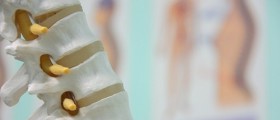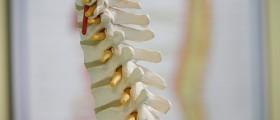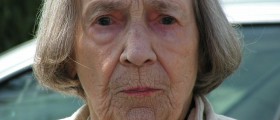
There are a lot of people who have experienced the pain that comes with bulging disc or contained spinal disorder, as others may know it. This particular condition is characterized by bulging of the intervertebral disc towards the spinal canal. People should know that there are plenty of causes that lead to this condition but the most common one is loss of water content in nucleus pulposus. This condition is most likely to occur in the lower back region, spinal or lumbar region and not that often in the neck region. However, cases where the bulging disc is in the neck region are quite rare. Bulging disc is more likely to happen to older people because with aging and degeneration this condition occurs. Most people are aware that discs play the role of cushions for the spinal cord. Once the disc is no longer in its proper position, contained spinal disorder occurs.
Intervertebral disc
The spine consists of discs which are important for the supporting of the entire body weight. The degeneration of discs is a long time process and besides aging, repeated stress also influences the occurring of it quite a lot. These discs take on the stress of every day movement and they have the role of shock absorbers. At first, a healthy disc will contain a lot of water in its center. This center is also known as nucleus pulposus. Because of this water, the disc behaves as a sponge. Any excessive pressure or injury is most likely to damage the exterior of the disc.
Pathology and mechanism
After injuries, the disc will bear scars and in time these scars will become small cracks. When that happens, the disc will become a lot weaker. After more time has passed, the disc will start to lose water content. When that happens, the disc will no longer be spongy and will start suffering from degeneration. With this, the two discs will get a lot closer to one another and that will lead to a shift in location of facet joints.
Symptoms
The exact location of the bulging disc will determine the symptoms. For instance, if the bulging disc is in the lower back a person will experience discomfort in the legs and hips.
Diagnosis
When a person comes to the hospital complaining about this pain, the doctor will order an MRI, a CT scan and an X-ray in order to properly diagnose the presence of bulging disc.
Treatment
People should know that there are several ways in which a person can treat this condition. Conservative therapy is most commonly used. Rest plays a very important part in the process of recovery. Physical therapy is important in rehabilitation program. In some cases, a person will receive an epidural steroid injection to ease the pain. They are also good for inflammation control.











-Causes,-Symptoms,-Diagnosis,-Treatment_f_280x120.jpg)





Your thoughts on this
Loading...